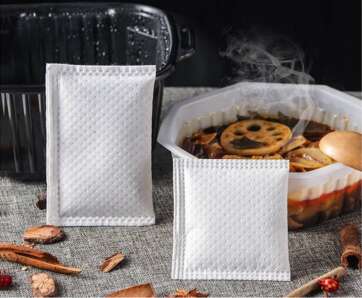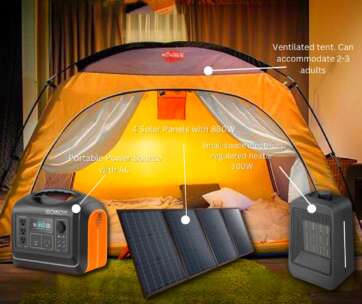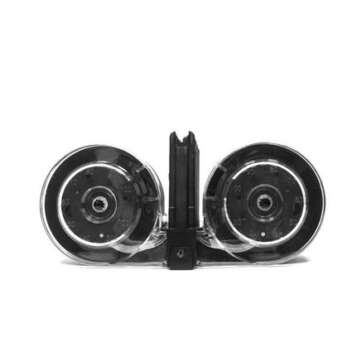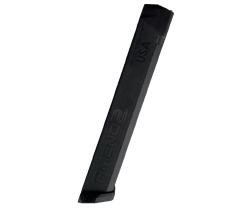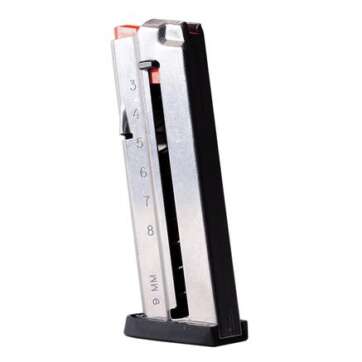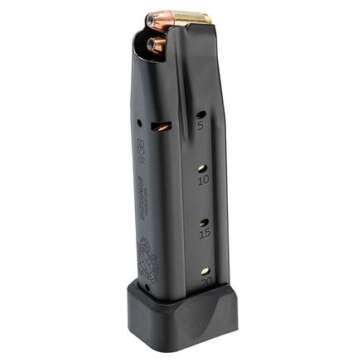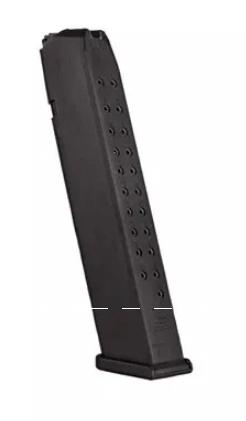Gun Parts and Tools
Showing 1–9 of 42 results
-
$1,98900
The Bolt
The Bolt is a mechanical part of a firearm; it is primarily seen in semi-automatic pistols that block the rear chamber while firing but moves aside to allow another cartridge to be inserted.
The Breech
The essential part of the firearm holds the firing mechanism where the cartridge is inserted.
The Breech Block
The movable part of the firing system that seals the moment of firing, preventing gasses from escaping. Most modern small firearms use a bolt.
The Chamber
The barrel or barrel extension portion supports the cartridge case while it is in the firing position.
The Clip
A device that contains several cartridges that are fed into the magazine of a firearm.
The Cylinder
The cylinder is a cylindrical, rotating part of a revolver that contains multiple cartridge chambers.
The Magazine
A magazine is the ammunition storage and feeding device of a firearm within or attached to a repeating firearm. Magazines can be removable or integral to weapons.
The Slide
Most semi-automatic pistols have a slide that generally houses the firing pin and the extractor and serves as the bolt. It is spring-loaded to chamber a fresh cartridge, provided that the magazine is not empty.
The Trigger
The trigger is the mechanism that actuates the firing sequence of the firearm.
After we know some basic firearms parts, let’s talk about the different tools we can use to maintain and clean your guns.
Tools you Need to Clean your Guns
Maintaining your rifle’s cleanliness and functionality is one of the most important things you will ever do with it. If your pistol is unclean and not properly oiled, it will not perform properly, which might harm you and others. So, for your own and others’ safety, here are five essential pieces of equipment you’ll need to get started cleaning your pistol.
The Multi-Tool
Most newly acquired weapons will arrive with all the equipment required to disassemble and reassemble the handgun. These instruments, meanwhile, can occasionally be tiny and straightforward to lose. You could already have some tools on hand, such as flathead or phillips screwdrivers, that would do the trick, but we, along with the hunters at Wide Open Spaces, advise spending a little money on a multi-tool. A multi-tool is a compact, helpful item that houses all the equipment you could require to dismantle your gun in one location. Additionally, the Multi-Tool may be helpful in almost any other circumstance that calls for the usage of tools.
The Cleaning Rods
It’s noteworthy to note that, contrary to popular belief, cleaning your weapon might make it simpler for harm to occur. It is as easy as buying the incorrect pistol cleaning equipment. One item of equipment you need to be cautious with is cleaning rods. According to Range365’s firearm experts and gun reviewers, the secret is to get a cleaning rod (or any other piece of gear) made of softer metal than your gun’s. Typically, bronze is the best option, particularly for cleaning rods. You could always try a carbon fiber rod if you want to spend a little more money on something of higher quality. Finding a rod that won’t nick the inside metal of your pistol is crucial because both types are utilized to clean the barrel.
The Bore Brush, Jag, or Loop
These three items are what are fastened to the cleaning rod’s end. All three are secure to use, but each tool serves a distinct function. There are two types of bore brushes: bronze and nylon. Although nylon brushes often last longer, bronze brushes are somewhat more abrasive. Bore brushes are utilized to break up or remove any buildup inside the rifle barrel. If there is any mess inside the barrel, Jags and Loops are used to run a patch (square cotton swab). A jag is used to attach the patch to the end’s tiny tip, and a loop is used to insert it through the needle-like hole. The patch must be changed after every barrel pass to prevent the barrel from being filled with the same muck again.
Ultrasonic Gun Cleaner
Although unnecessary, an ultrasonic pistol cleaning system is a wise purchase. Your cleaning time can be reduced if you use the proper instrument. With the correct settings and chemistry, ultrasonic gun cleaners may also clean more entirely than conventional hand cleaning.
The Right Chemicals
We’ve bad news for you if you believe WD-40 would help lube up your gun: it won’t. The website for the magazine Outdoor Life claims that WD-40 will leave a waxy residue behind that may be just sticky enough to attract dirt and filth. You must apply a range of chemicals after cleaning a gun to preserve it in the most excellent shape.
These compounds include:
Solvent cleans the bore of carbon, lead, and other contaminants.
Degreaser: cleans existing oil and grime from the gun’s working components. Brulin 815GD ultrasonic degreaser concentrate is one illustration.
Lubricant lubricates moving parts and prevents corrosion on them. One illustration is Val-Rust Lubricant.
Water is pushed out of your weapon, preventing corrosion. It is advantageous if you plan to use your rifle in more challenging environments (such as those associated with hunting or military service).


